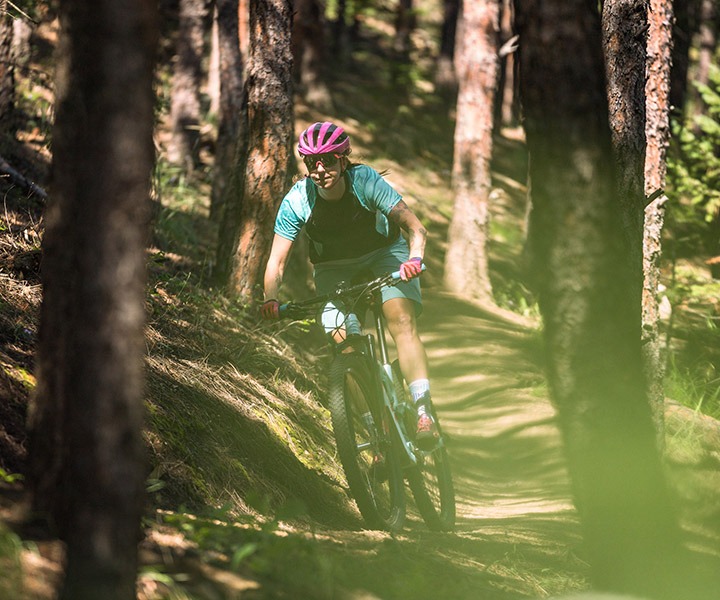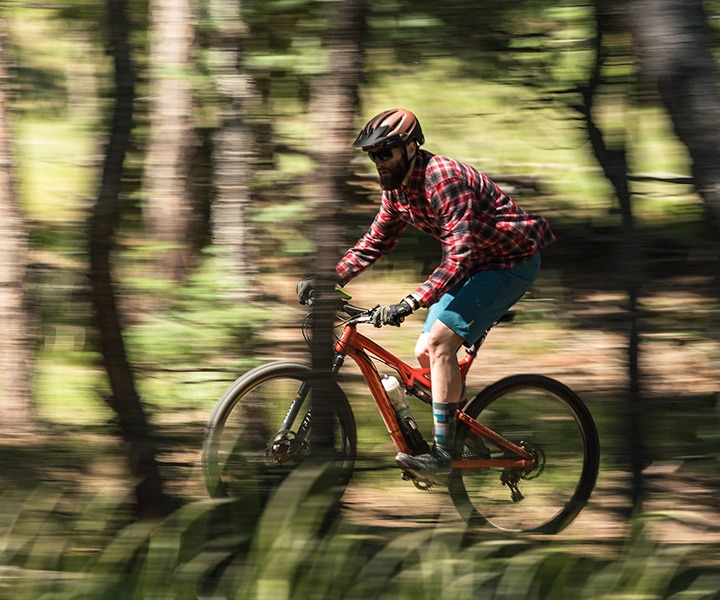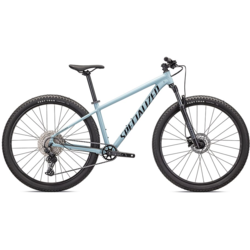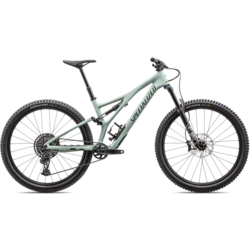Mountain Bike Guide
For The Love of Dirt
Whether you're seeking adventure, a break from your routine, or a challenging workout, mountain biking is a perfect fit. There’s been plenty of research suggesting that outdoor activities can improve mental and physical health. Maybe that’s why mountain biking fosters such a fun and inviting community.

Cross Country Bikes
These are the efficient, go-fast bikes of the mountain bike world. Cross country bikes generally have more efficient travel. They feature steep head and seat angles which gives you more power for climbing.

Trail Bikes
These bikes are the Goldilocks of mountain bikes—not too much, and not too little. A trail bike climbs well and descends well. Their relaxed geometry balances climbing efficiency with confident descending prowess.

Enduro Bikes
These bikes are built to go fast in the direction that gravity pulls you, down. These bikes give up some climbing efficiency by including more squish than other bikes along with a more relaxed position for confident handling at speed.

Mountain Bike Tire Sizes 101
26"
Originally MTB's came with only one wheel size, the humble 26". Bigger than a BMX and smaller than a road bike wheel the 26" wheel offers a compact wheel that can be built into a stiff structure without excessive spoke tension, it helps keep rotating mass down and allows for nimble and agile wheel that can quickly respond to steering input.
27.5" (650b)
25mm wider at both the rim and tyre tread the 650b wheel increases circumference to give a slightly larger contact point for better grip and an improvement in roll-over that allows the wheel to roll over objects as opposed to being pushed back by them. Pros: Improved rollover and larger contact point.
29"
A standard 29er rim has the same circumference as a road bike rim, it's the biggest MTB rim size and has a BSD of 622m. Add a 2.3" tyre onto this and you have a wheel that stands 740mm tall at the tread and rolls over trails obstacles more easily than any of the smaller wheels. You get a better contact patch than with the standard 650b wheel and the slightly larger wheel carries its momentum better. They're now pretty much the standard for skinny XC wheels where their roll over ability compensates for a lack of suspension travel on skinny XC bikes. Pros: big contact patch, excellent rollover, carries momentum. (The standard road tyre, 700c, shares the 622mm BSD measurement with the 29" of-road tyre- as if it isn't confusing enough already!)
Fat Bikes 26"
With super-wide tires (4" through 5") Fat-Bikes float over snow, sand, and almost anything else in their path.
27.5+ (650+) Mid-
Fat Bikes
There's no change in the rim size with 650+ wheels, when compared to normal 650b wheels, all that is changed in that you're now rolling on fatter rubber. Typical plus size tyres are considered as 2.8" and over, with 3" being the norm. The plus size tyre gives you a much larger contact point, more tyre volume that allows for lower pressures for extra grip and the ability to soak up bumps and lumps without needing as much suspension as a skinnier tyre. In terms of circumference the 650+ wheel and tyre combo with 3.0" tyre is actually as big as the 29" wheel with a 2.3" tyre. Pros: enhanced contact patch, better grip from lower pressure, improved rollover ability.
29+
There's no change in the rim size with 29+ wheels, when compared to normal 629" wheels, all that is changed in that you're now rolling on fatter rubber. Like their 650b+ cousins typical plus size tyres are considered as 2.8" and over, with 3" being the norm. The plus size tyre gives you a much larger contact point, more tyre volume that allows for lower pressures for extra grip and the ability to soak up bumps and lumps without needing as much suspension as a skinnier tyre. In terms of circumference, the 29+ wheel and tyre combo with 3.0" tyre is actually 38mm taller than a standard 29" wheel with a 2.3" tyre. Pros: enhanced contact patch, better grip from lower pressure, improved rollover ability.









